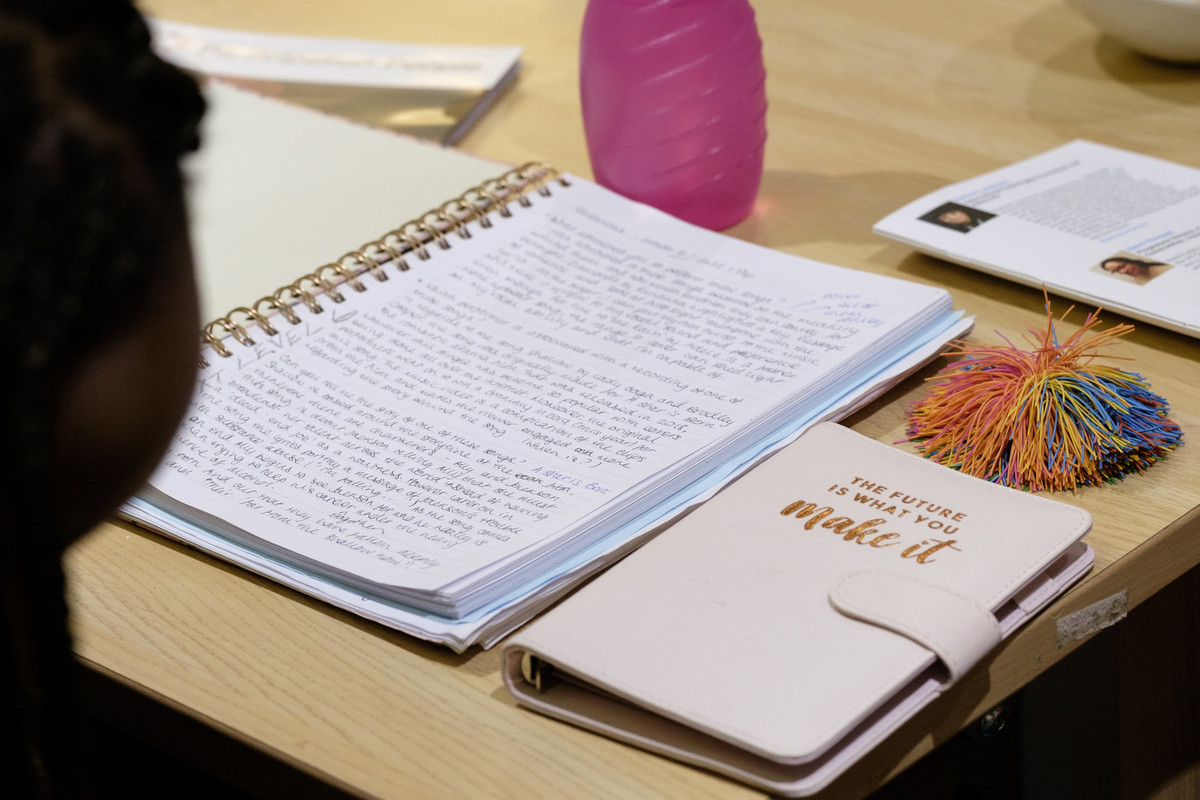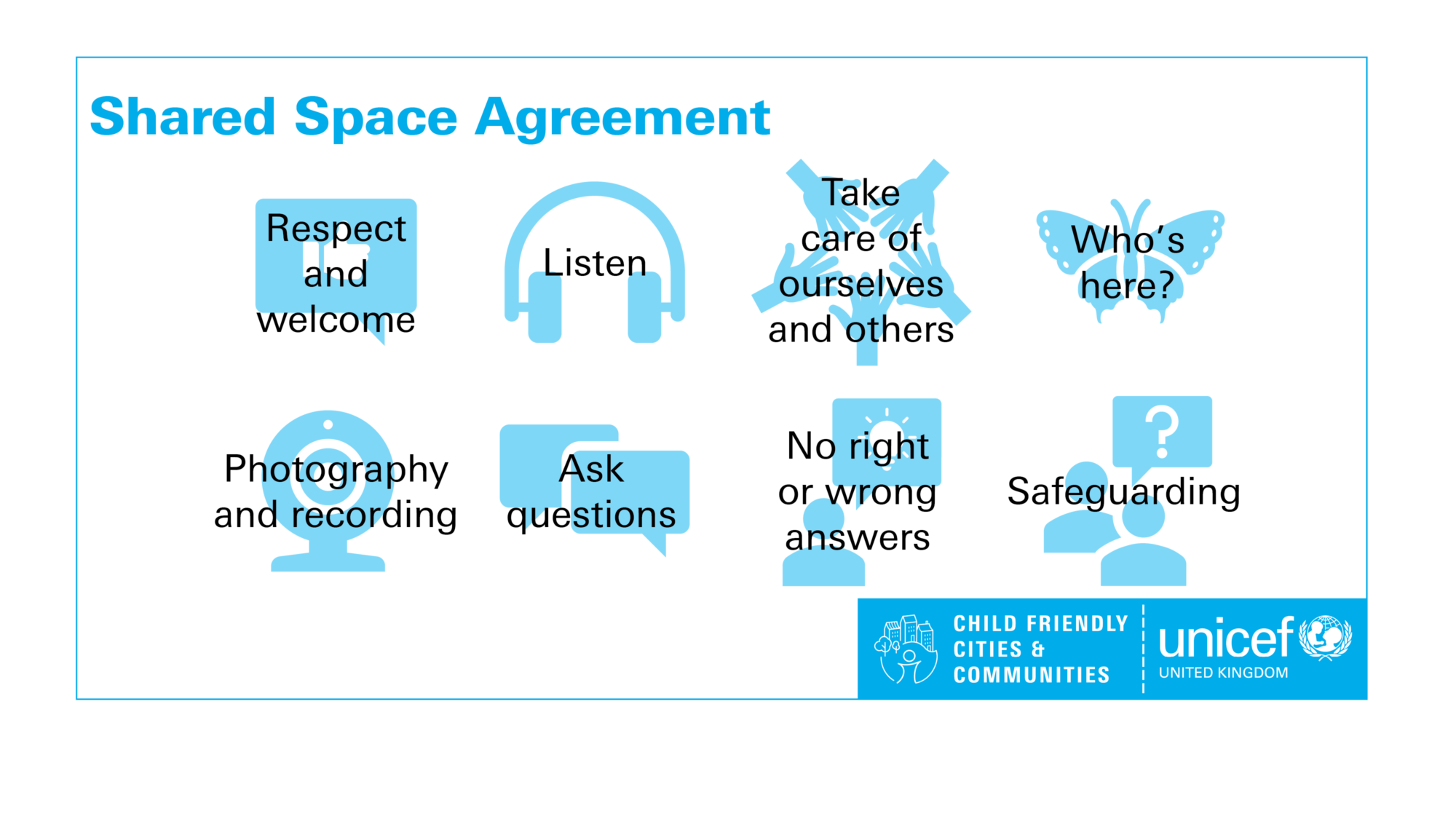
Shared Space Agreement
A shared space agreement is a collectively established group understanding of behaviours and processes, made at the beginning of an engagement session.
The agreement could cover any of the below points and be presented on a creative platform after a group brainstorming session.
Return to the shared space agreement at the beginning of each session and encourage everyone to hold each other to account.

Respect is fundamental, as it would be in any shared space. This covers language, tone and respect for different opinions or beliefs. It should demonstrate non-discrimination principles in action.
Agree on how you’re going to make sure everyone gets a chance to speak, and how the comments space will work and be moderated. For example, the person who wants to contribute could wave a virtual hand, or submit an emoji to the comments.
Make use of the mute function! It’s more efficient and fair to have a system for contributing than everyone being un-muted.
Cover emotional indicators for responses, for example thumbs up or clapping hands emojis at the end of a workshop.
Think about how to keep each other safe in the digital space, with reference to
- How much information people choose to reveal about themselves;
- An agreement on what happens if someone is worried about the safety or wellbeing of a participant, and;
- Signposting to information and support beyond the session.
Consider introductions that are fun but not revealing; when participants are introducing themselves, they don’t need to give their full name or lots of information about themselves.
It’s enough to just say one name and their age, but no locations or personal information. This ensures that nobody’s full identity is exposed.
Share your preferred pronoun (he/she/they etc.) at the outset and encourage others to do the same so that everyone is referred to correctly in the digital space.
Tailor the session to the age range of participants.
Include a reminder for children under 13 to have a supporting adult with or available to them.
Discuss and agree a position on whether people are happy for screenshots or recordings to be taken of the session.
Written or recorded informed consent for this should be gathered in advance wherever possible.
Decide together the best way to address questions. Some options include
- Using the comments box;
- Putting up a hand (in video calls);
- Using virtual post-it notes on a shared message board.
Use this time to reassure all participants that while all opinions and ideas should remain respectful of each other, there are no right or wrong answers.
If a participant makes a suggestion that needs some consideration before an answer can be given, thank them for the contribution and let them know you will follow up with them once you’ve been able to consider the idea in further detail.
Do not promise confidentiality, as it may have to be broken in the instance of any safeguarding concerns.
For more information on safeguarding in the context of digital participation work see our resources on risk assessments and reporting concerns.


